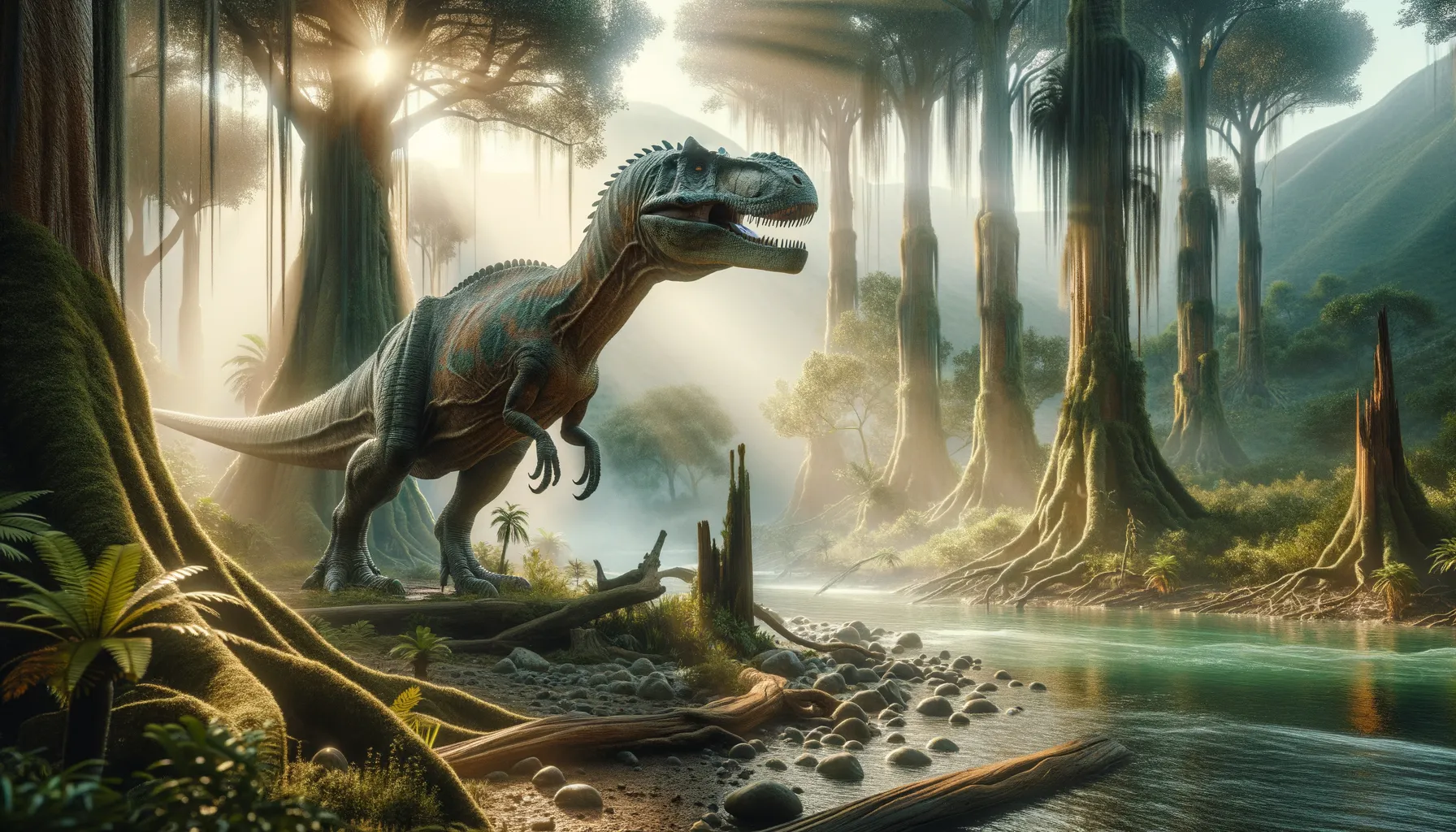
Sigilmassasaurus
Giant predator of Cretaceous waters
Period
Cretaceous
Length
Approximately 10 meters long.
Height
About 2 meters at the hips.
Weight
Estimated around 2 tons.
Sigilmassasaurus was a large carnivorous dinosaur that roamed the lands of North Africa during the Late Cretaceous period. Known for its long, crocodile-like snout, it is believed to have had a semi-aquatic lifestyle, hunting for fish in the river systems of what is now Morocco. Its classification has been the subject of debate, but it remains a fascinating species for paleontologists.
Diet
Sigilmassasaurus primarily consumed fish, utilizing its long snout to catch prey in the river systems of its time. It likely supplemented its diet with smaller animals and carrion when available, adapting to the resources in its environment.
Hunting
This dinosaur likely used its elongated, narrow snout to efficiently catch fish, similar to modern crocodiles. Its sharp teeth were ideal for grasping slippery prey, although it may not have been a specialist in hunting fast-moving targets on land.
Environmental challenges
Sigilmassasaurus lived during a time of significant environmental change, with fluctuating temperatures and sea levels affecting its habitat. Its survival depended on adapting to these changes and competing for resources with other large predators. Fossil evidence suggests periodic droughts and food scarcity, which may have pushed it to diversify its diet and hunting strategies.
Speed
Likely moderate due to its heavy build.
Lifespan
Estimated to be around 20 to 30 years.
First discovery
Found in Morocco in the Kem Kem beds.
Fun Facts
- Sigilmassasaurus was a large dinosaur that lived around 100 million years ago, during the Late Cretaceous period.
- This dinosaur's name means 'Sijilmassa lizard,' named after a region in what is now Morocco where its fossils were found.
- Sigilmassasaurus is believed to have been a carnivorous dinosaur, likely hunting fish and other small creatures in its environment.
- It is part of the Spinosauridae family, which includes other famous dinosaurs like Spinosaurus known for their crocodile-like features.
- One of the unique features of Sigilmassasaurus is its elongated neck vertebrae, which have sparked much debate among scientists about its lifestyle and posture.
- The exact size of Sigilmassasaurus is uncertain, but some estimates suggest it may have measured up to 10 meters (about 33 feet) long.
- Fossils of Sigilmassasaurus have contributed greatly to our understanding of the diversity of predatory dinosaurs in North Africa during the Cretaceous period.
Growth and Development
Juveniles likely grew rapidly to reach a size that reduced predation risk, a common trait among large theropods. Growth rates may have been influenced by food availability and environmental conditions, allowing for flexibility in development. Fossilized bones show evidence of growth rings, similar to modern reptiles, providing insights into their year-to-year development.
Habitat
Sigilmassasaurus thrived in the lush river environments of ancient North Africa, where water and prey were abundant. These areas were teeming with life, offering a variety of fish and other aquatic creatures. The proximity to water meant it could take advantage of both land and aquatic resources, making it an adaptable predator in its ecosystem.
Interaction with other species
In its ecosystem, Sigilmassasaurus coexisted with other large carnivorous dinosaurs like Spinosaurus, competing for similar food sources. This competition likely drove niche partitioning, where Sigilmassasaurus might have focused more on specific prey types or different territories. It also shared its environment with numerous herbivorous dinosaurs, offering potential scavenging opportunities.
Natural lifespan
Sigilmassasaurus likely lived for 20 to 30 years in the wild.
Reproduction
Sigilmassasaurus, like many theropods, likely reproduced by laying eggs, which they might have buried in warm sand or vegetation. Parental care levels remain uncertain, but some evidence suggests possible guarding of nests. Hatchlings would have been vulnerable to predators, making early growth crucial for survival.
Social behaviour
Little is known about the social behavior of Sigilmassasaurus, but it may have been solitary or lived in loose groups. Competition for mates and territory could have led to aggressive interactions. Like many large predators, resource availability would influence whether these dinosaurs cooperated or competed.
Fossil locations
Fossils of Sigilmassasaurus have primarily been found in the Kem Kem beds of Morocco, an area rich in Cretaceous period deposits. These sites have provided significant insight into the diversity of large carnivorous dinosaurs in North Africa. Discoveries in this region continue to expand our understanding of the species' ecological niches and competition dynamics.
